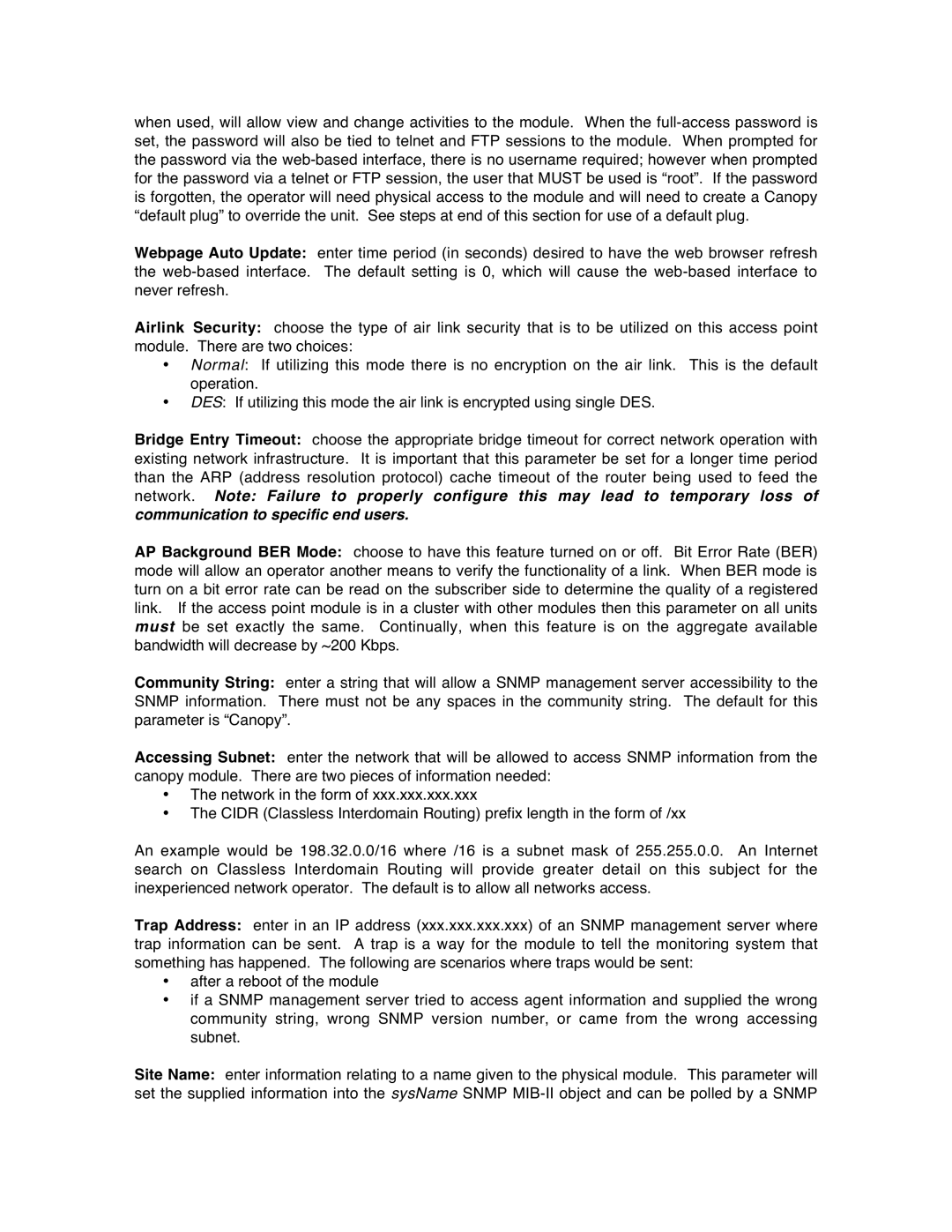when used, will allow view and change activities to the module. When the
Webpage Auto Update: the web-based interface. never refresh.
enter time period (in seconds) desired to have the web browser refresh The default setting is 0, which will cause the
Airlink Security: choose the type of air link security that is to be utilized on this access point module. There are two choices:
•Normal: If utilizing this mode there is no encryption on the air link. This is the default operation.
•DES: If utilizing this mode the air link is encrypted using single DES.
Bridge Entry Timeout: choose the appropriate bridge timeout for correct network operation with existing network infrastructure. It is important that this parameter be set for a longer time period than the ARP (address resolution protocol) cache timeout of the router being used to feed the network. Note: Failure to properly configure this may lead to temporary loss of communication to specific end users.
AP Background BER Mode: choose to have this feature turned on or off. Bit Error Rate (BER) mode will allow an operator another means to verify the functionality of a link. When BER mode is turn on a bit error rate can be read on the subscriber side to determine the quality of a registered link. If the access point module is in a cluster with other modules then this parameter on all units must be set exactly the same. Continually, when this feature is on the aggregate available bandwidth will decrease by ~200 Kbps.
Community String: enter a string that will allow a SNMP management server accessibility to the SNMP information. There must not be any spaces in the community string. The default for this parameter is “Canopy”.
Accessing Subnet: enter the network that will be allowed to access SNMP information from the canopy module. There are two pieces of information needed:
•The network in the form of xxx.xxx.xxx.xxx
•The CIDR (Classless Interdomain Routing) prefix length in the form of /xx
An example would be 198.32.0.0/16 where /16 is a subnet mask of 255.255.0.0. An Internet search on Classless Interdomain Routing will provide greater detail on this subject for the inexperienced network operator. The default is to allow all networks access.
Trap Address: enter in an IP address (xxx.xxx.xxx.xxx) of an SNMP management server where trap information can be sent. A trap is a way for the module to tell the monitoring system that something has happened. The following are scenarios where traps would be sent:
•after a reboot of the module
•if a SNMP management server tried to access agent information and supplied the wrong community string, wrong SNMP version number, or came from the wrong accessing subnet.
Site Name: enter information relating to a name given to the physical module. This parameter will set the supplied information into the sysName SNMP
